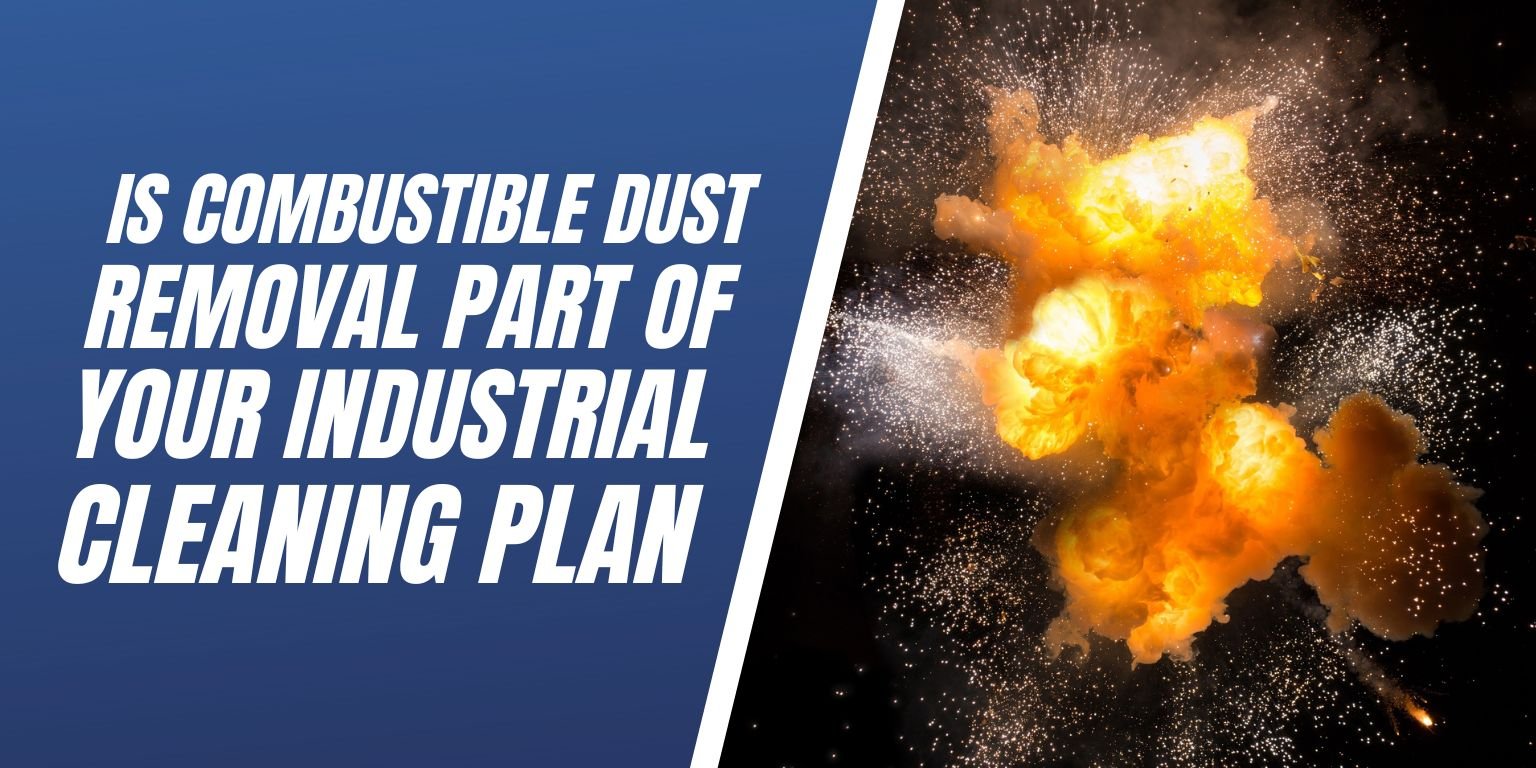
Combustible dust remediation is regularly not a part of an industrial facility’s cleaning plan, because not enough people realize that the dust created from manufacturing can become an explosion hazard. In fact, the first time many people learn about the risk is as they are being handed a citation by an OSHA inspector, or worse, after an explosion has already occurred. So what exactly is combustible dust and how does it cause a dust explosion?
What Is Combustible Dust?
NFPA 654 defines combustible dust as “A combustible particulate solid that presents a fire or deflagration hazard when suspended in air or some other oxidizing medium over a range of concentrations, regardless of particle size or shape.” Below is a list about the different types of materials that create dust that is highly combustible
- Wood and Sawdust
- Plastics and Rubbers
- Coal and other Fossil Fuels
- Sugars, Grains and Food
- Paper
- Textiles
- Metals
- Chemicals
How Does A Dust Explosion Occur?
There are five elements that are needed in order for a combustible dust explosion to happen – dust, oxidant, dispersion, confinement and ignition. As many of you may already know, surfaces start out clean and free of any combustible dust. Throughout the manufacturing process, dust begins to collect on the floor, machinery and even on high surfaces. The empty space of the building is full of an oxidant, which is typically oxygen. When the dust is disrupted, it will disperse into a dust cloud. An ignition source is then created (typically a spark) within reach of the dust cloud. Since the dust cloud is contained within the walls of the building, it will cause it to ignite and create an explosion.
This is why making sure that combustible dust removal is a part of your industrial cleaning plan will help decrease the risk of a fire explosion. Not to mention, it will help keep the environment where your employees work clean and safe!
How Do You Properly Clean Combustible Dust?
Knowing how to properly clean combustible dust is important not only for the safety of you and your employees, but in also preventing future dust explosions.
- Appropriate Safety Gear - Making sure that wearing safety gear while cleaning combustible dust is an important part of cleaning combustible dust. Using the proper PPE gear will help to ensure the health and safety of the individual who is removing the dust.
- Right Safety Equipment - There are only a few vacuums that are safe to use when cleaning combustible dust. Many dust collection systems just blow the dust around and keep it in the air, trying to have it eventually move into a collection area, but these cause hazards by creating an explosive dust cloud and making the air quality lower. Other dust collection systems do actually suck in and filter the air, but this causes dust to settle in the ductwork leading to the collection system. If the collection area becomes full, the dust can begin blowing backwards out of the vents, making the situation worse than before, and in the case of a fire the dust acts like a fuel, letting the fire travel throughout the building.
- Proper Training and Certification - In OSHA’s Combustible Dust National Emphasis Program, two of the most common citations were improper housekeeping, including combustible dust accumulation, and use of compressed air to blow down combustible dust. Having the proper training for cleaning combustible dust is one of the most important parts of cleaning combustible dust. Technicians should be trained in OSHA’s 10- or 30-hour Safety, Aerial Lifts, Confined Spaces, First Aid, CPR, and Combustible Dust Safety and Awareness.
With many manufacturing facilities closed for the summer months, maintenance and cleaning services are able to be performed when the machinery is stopped and there are no employees to work around. However, one important service that is often left out of the cleaning schedule is combustible dust removal.
Why Choose Hughes Environmental?
Hughes Environmental has performed combustible dust cleaning in a wide array of facilities and has dealt with many types of combustible dust. Our technicians that are trained, certified and up-to-date on common best practices, and use equipment approved for combustible dust cleaning, such as intrinsically safe vacuums and grounded hoses.
Hughes Environmental has an OSHA trainer on staff, and our technicians have been through OSHA 10- or 30-hour training. We also have Council-certified Indoor Environmentalists (CIE) and Council-certified Microbial Remediators (CMR) on staff.
Contact Us Here or call us at 888-845-3952

